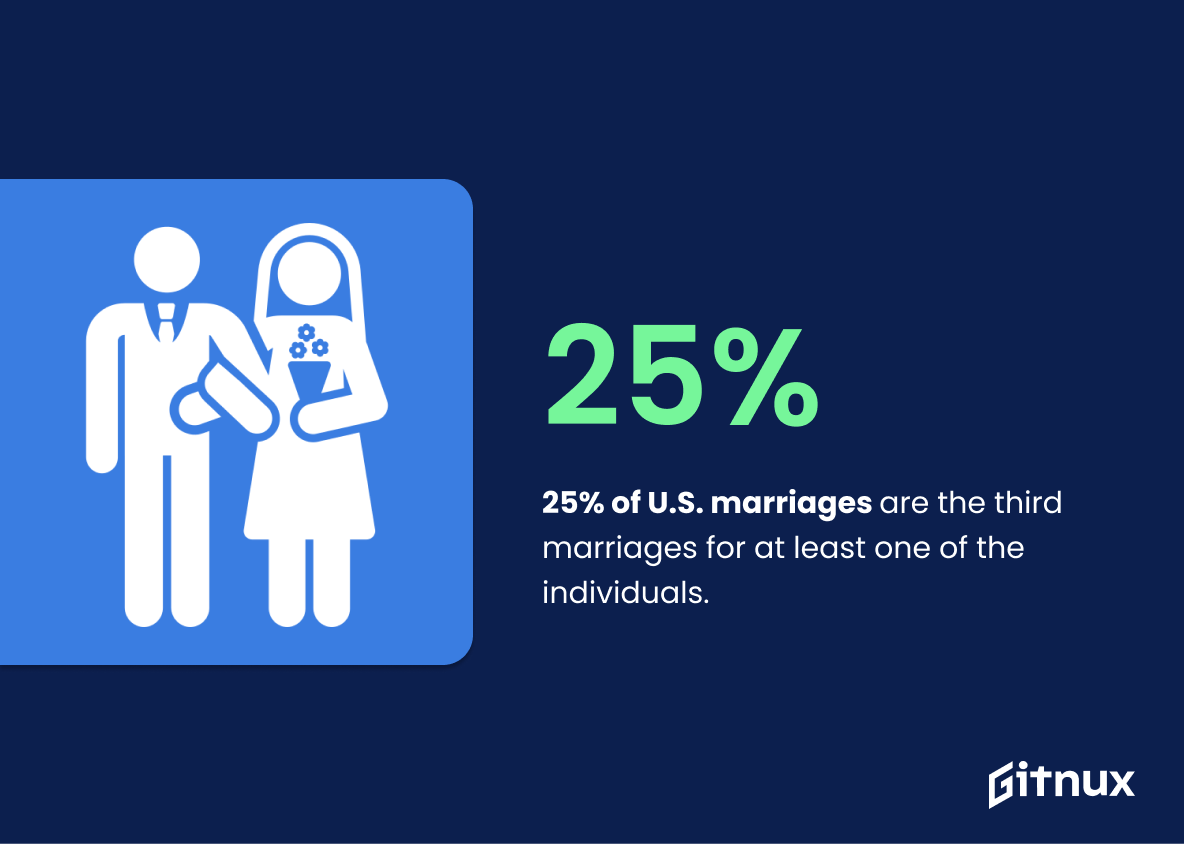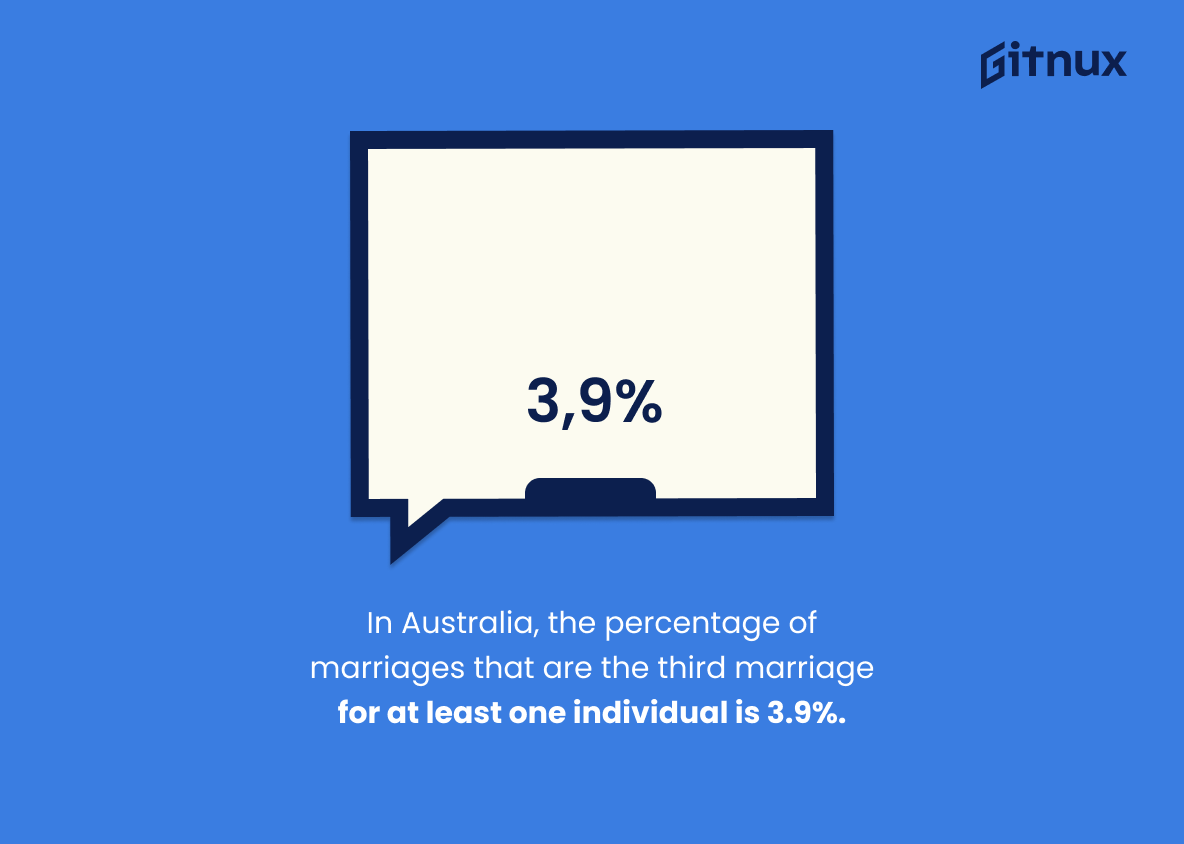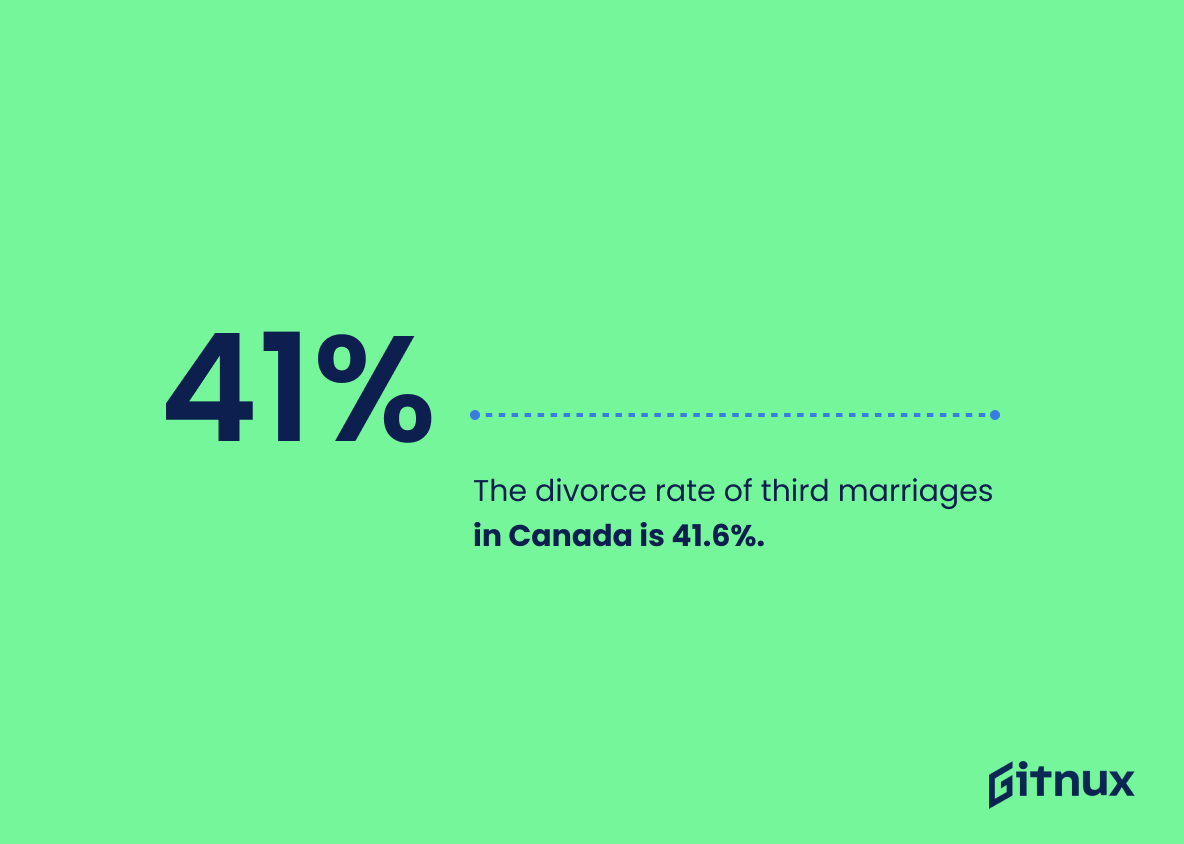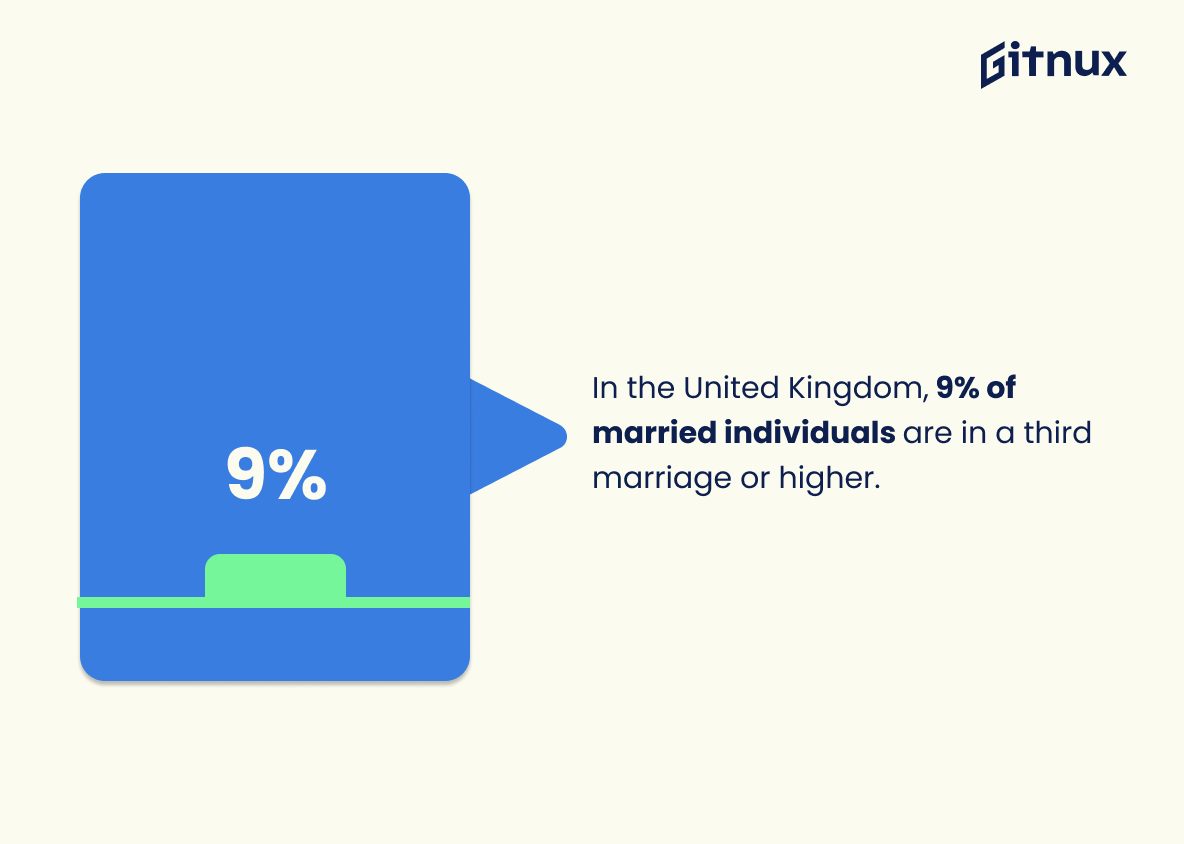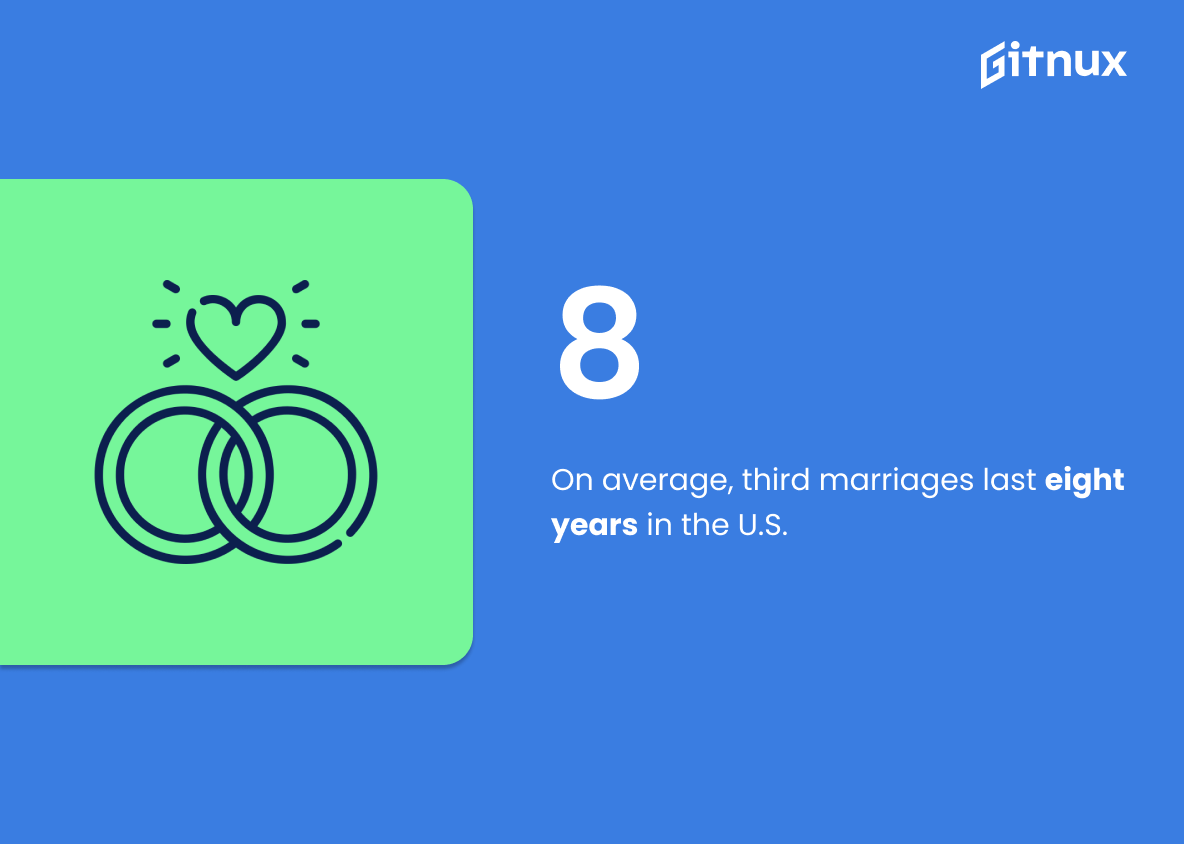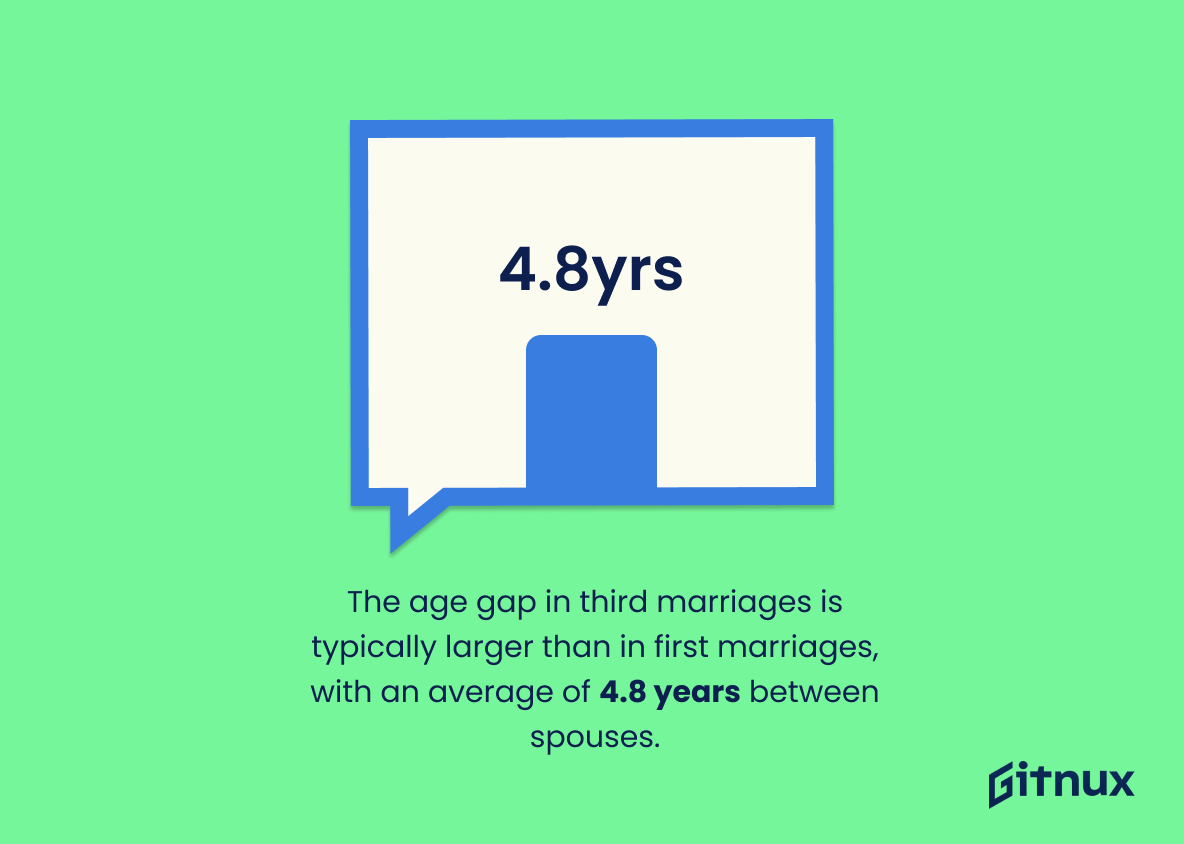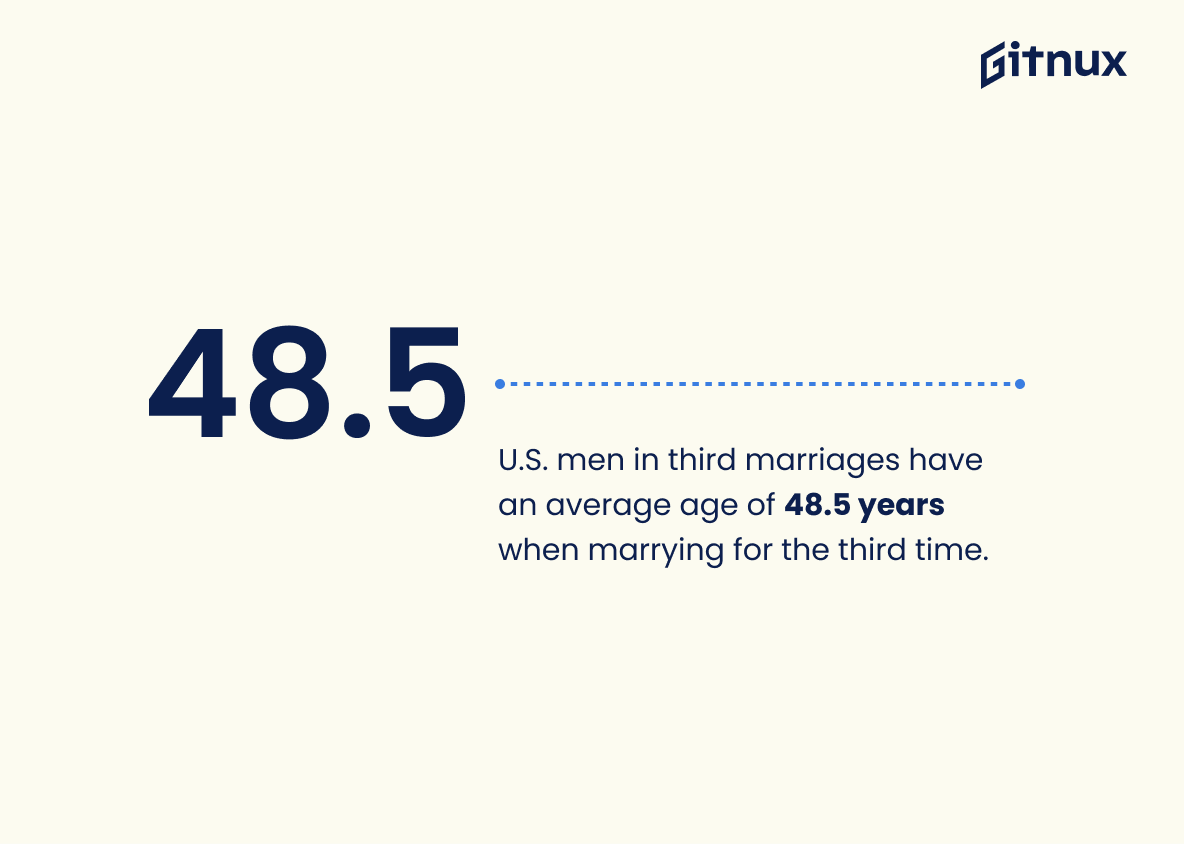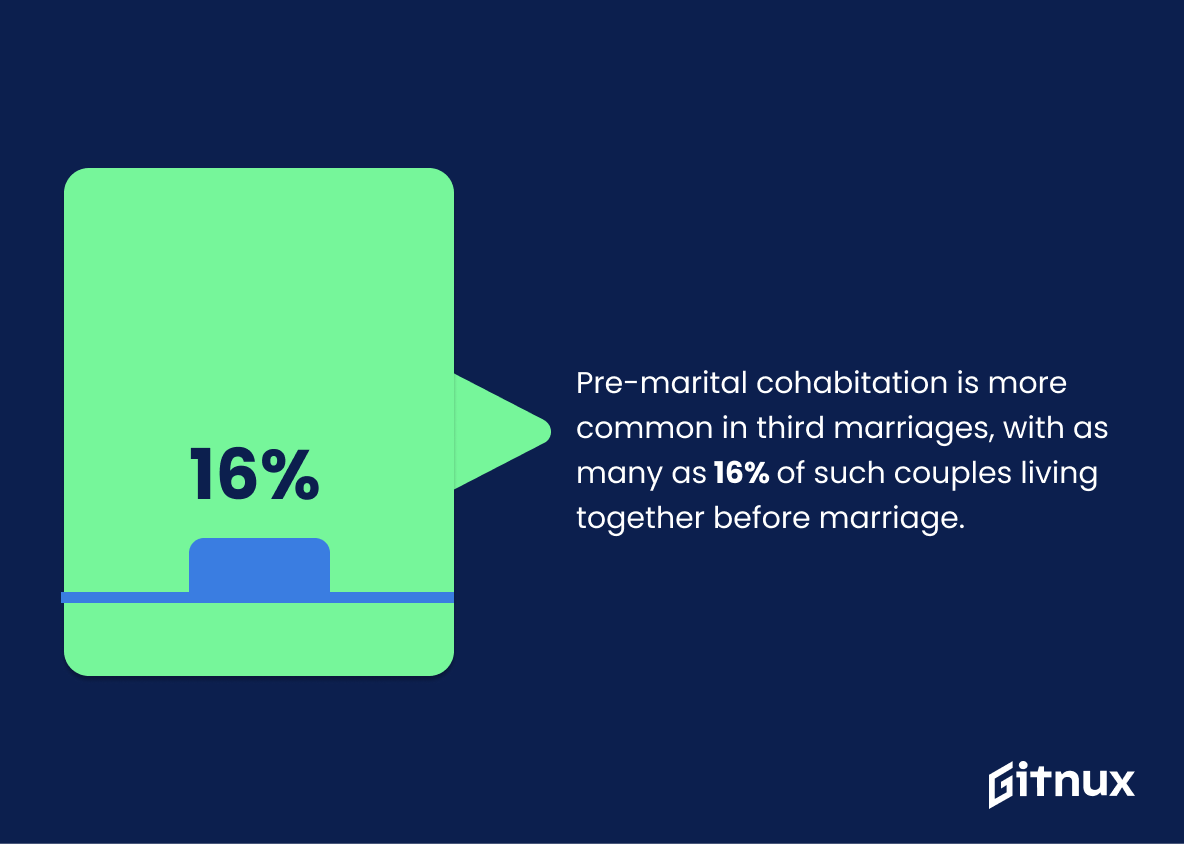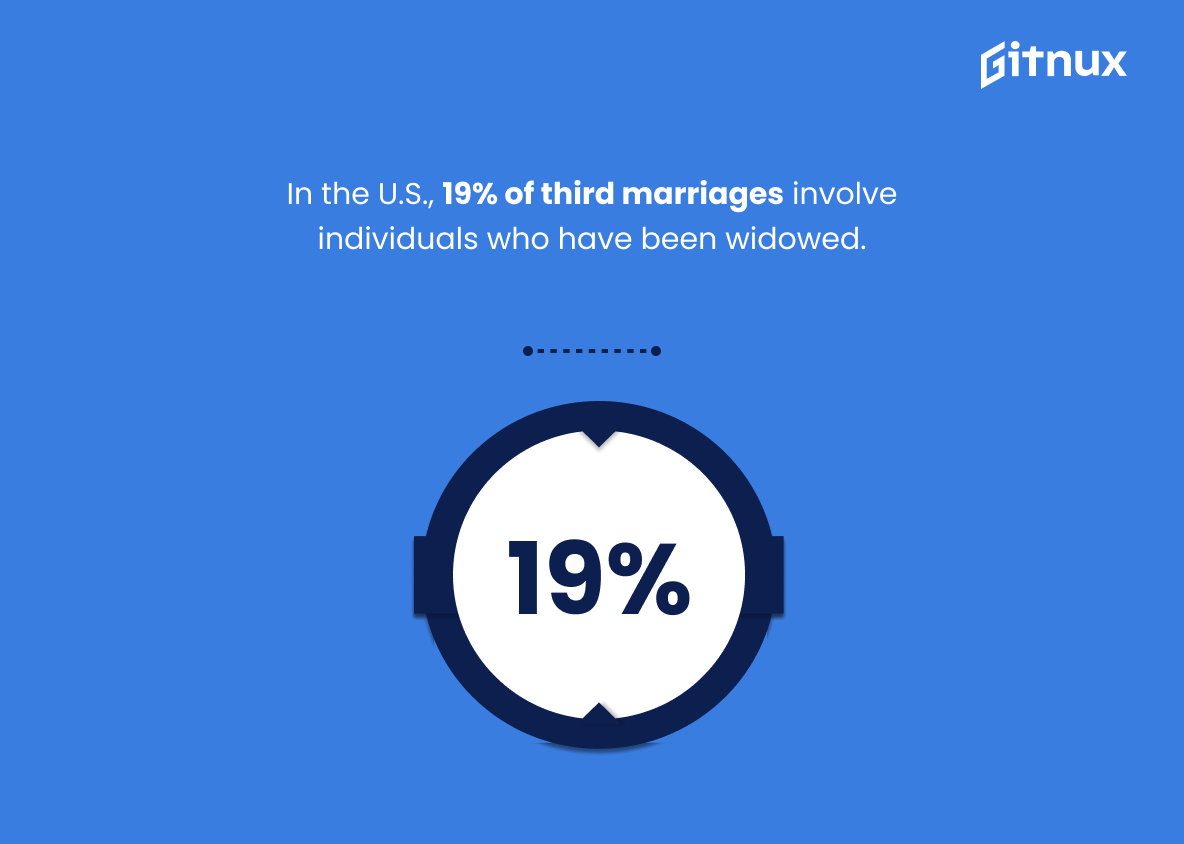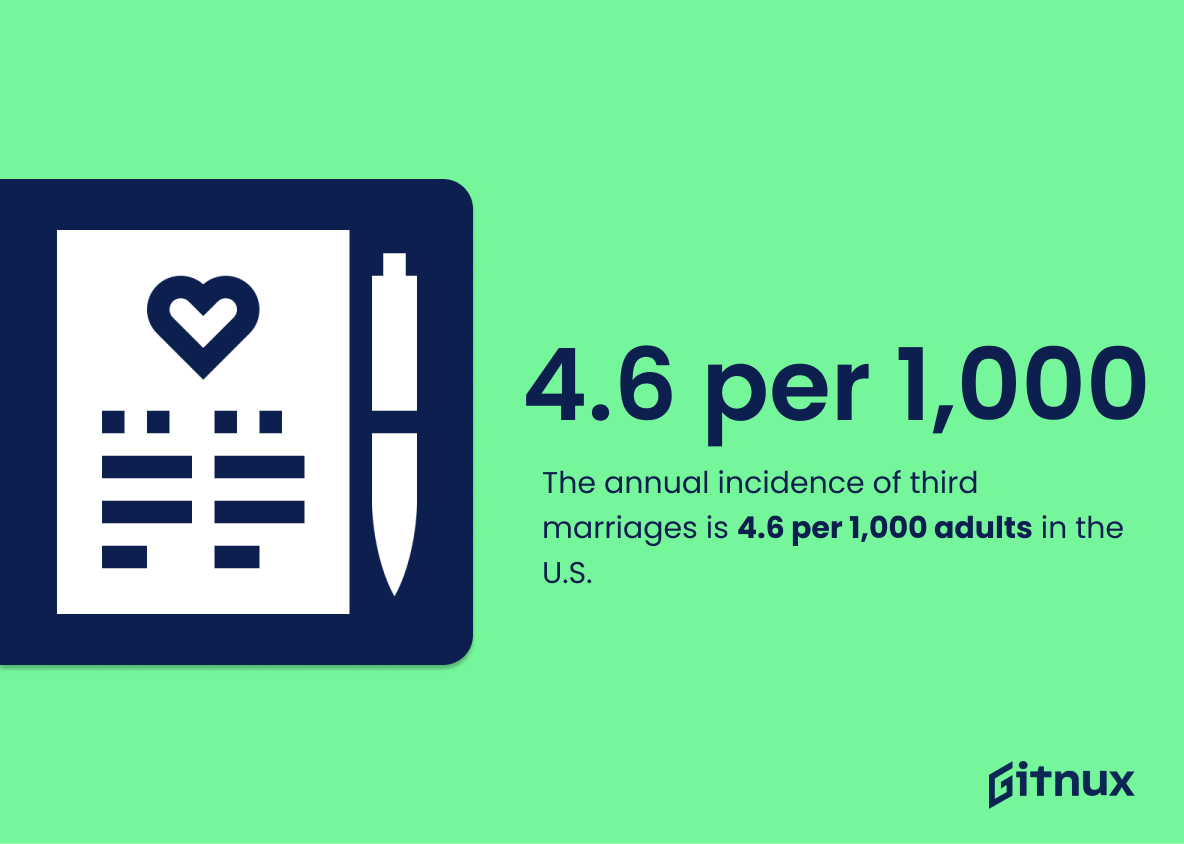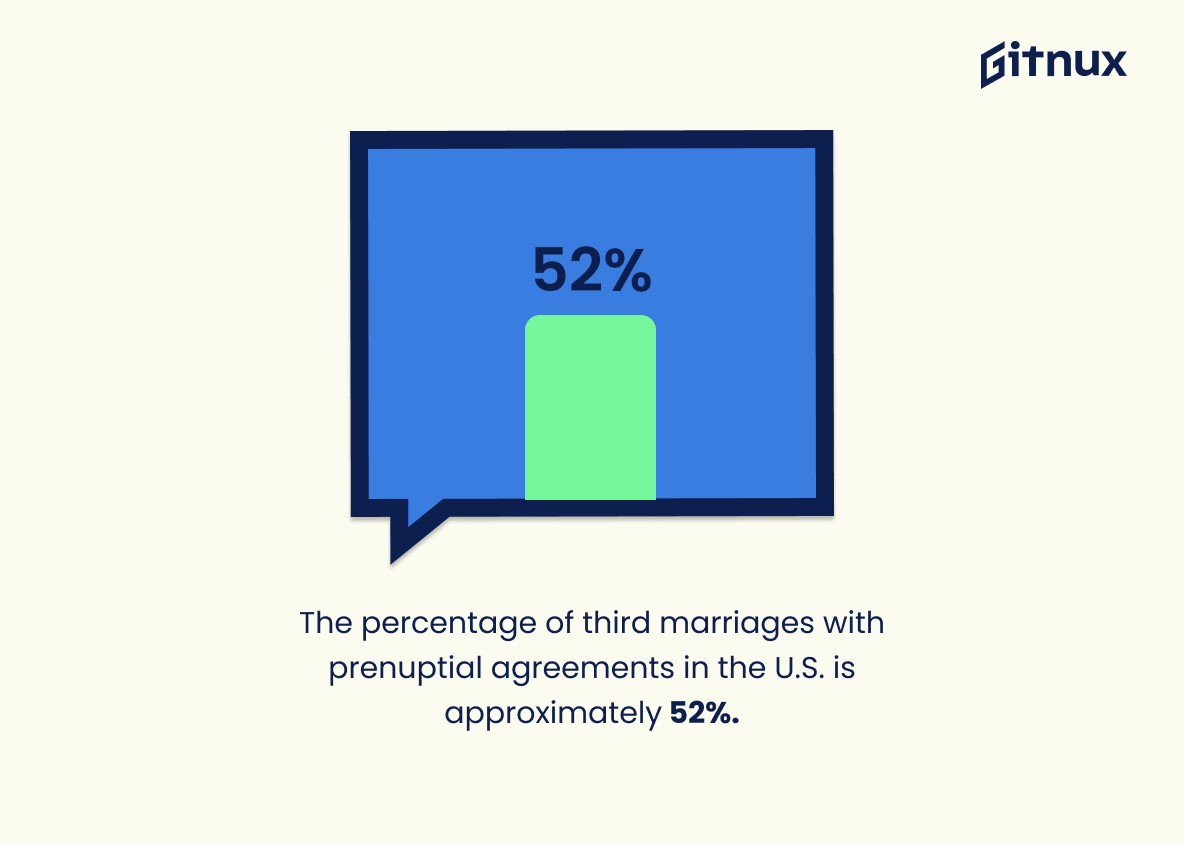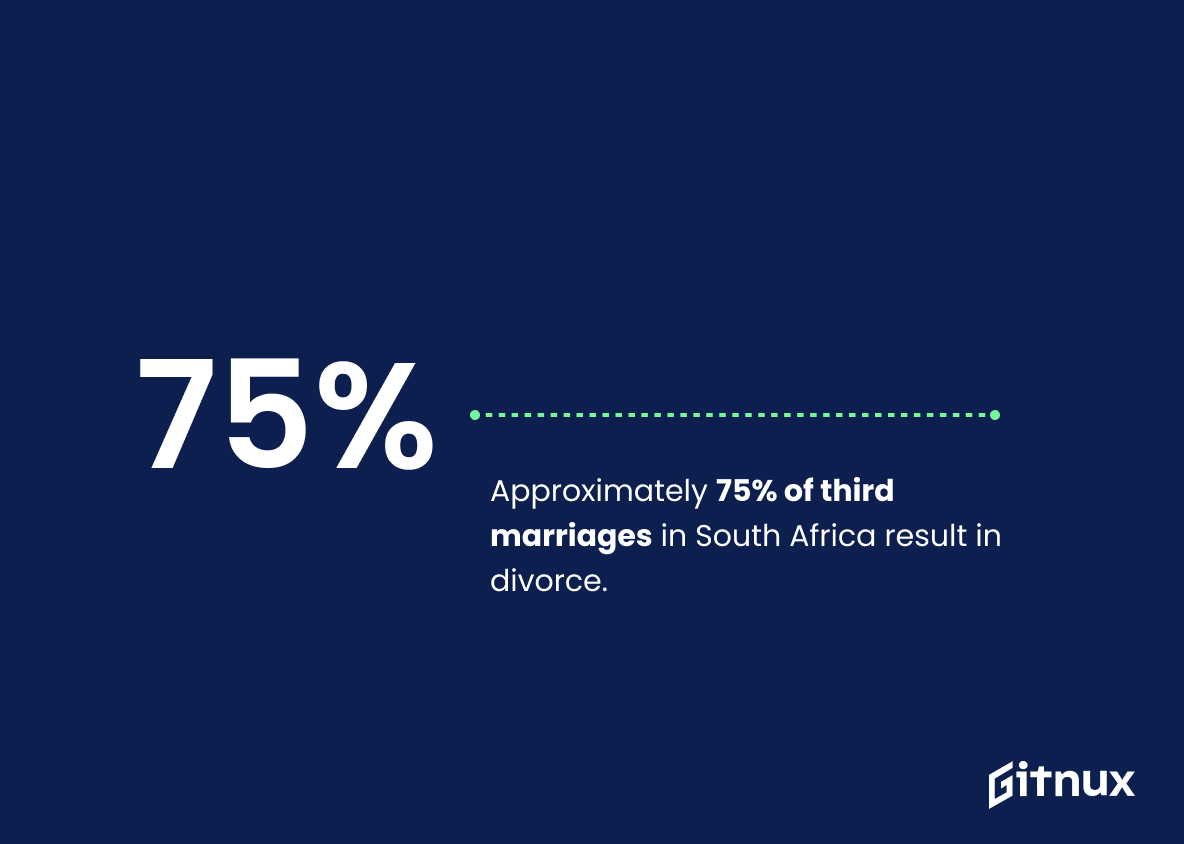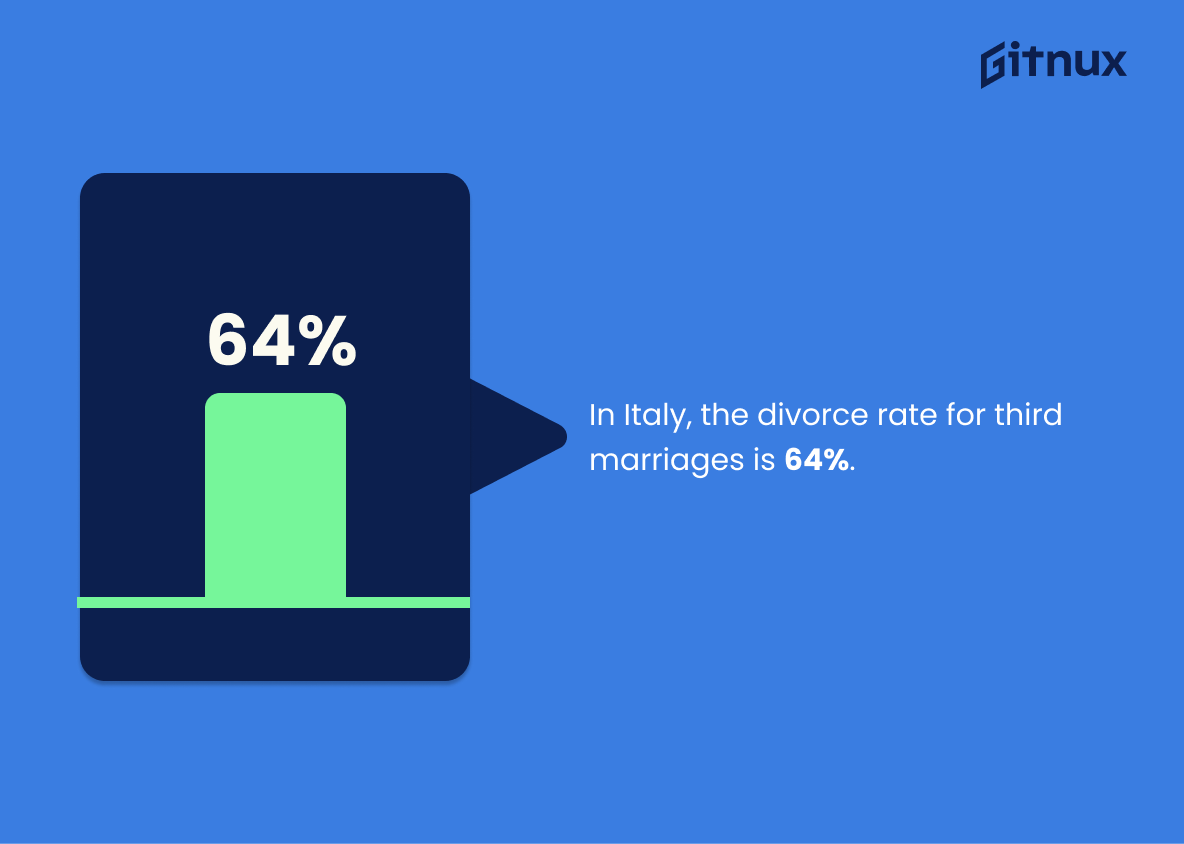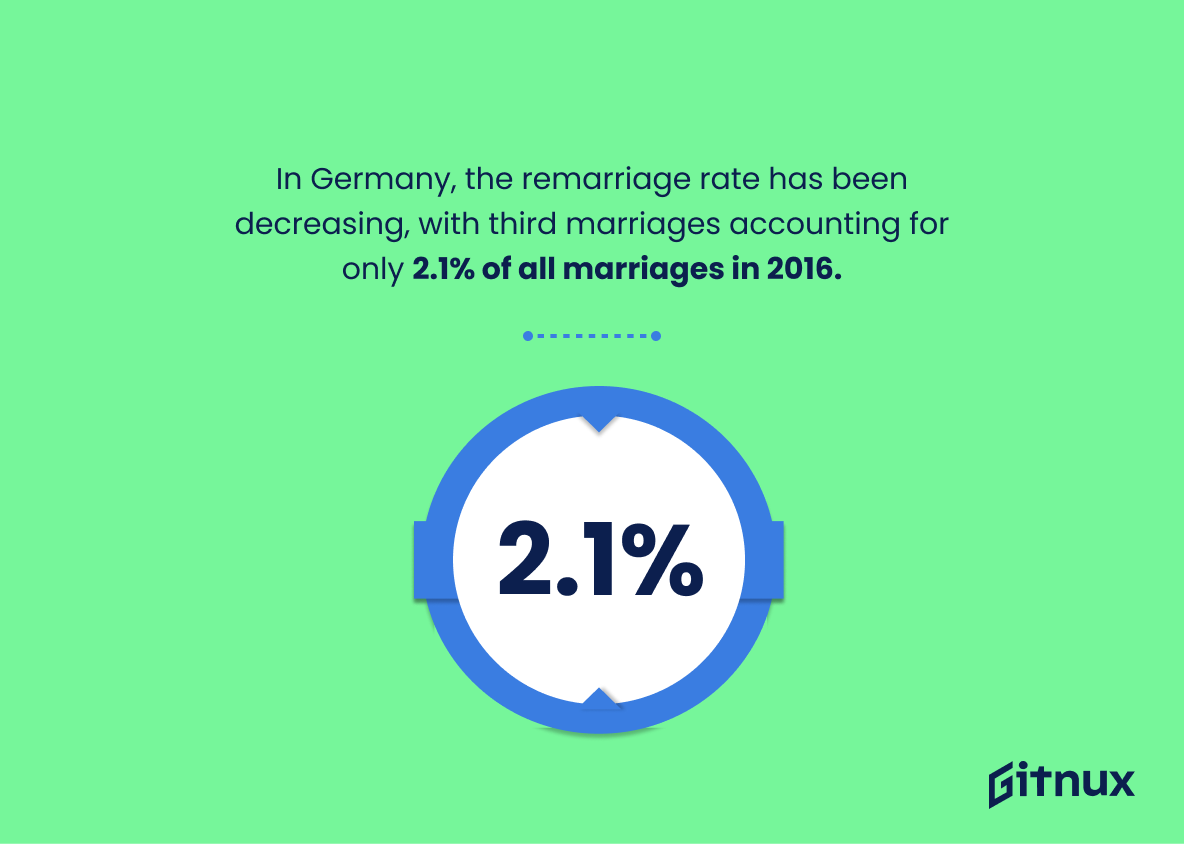The statistics on third marriages in the U.S., Australia, Canada, United Kingdom, South Africa and Italy reveal a wide range of trends. Approximately 29% of married individuals in the U.S. are currently in their third marriage; 73% of these end up divorcing while the median duration is 1.6 years long – with 25% involving at least one individual who has been previously married twice or more before this union was formed. In Australia 3.9%, Canada 41.6%, UK 9%, South Africa 75% and Italy 64%.
In addition to divorce rates being higher for those entering into a third marriage than first-time couples, other factors such as age gap between spouses (4-8 years), premarital cohabitation (16%), religious wedding ceremonies (28%) and remarriage rate decreasing over time can also be observed across different countries worldwide when it comes to unions that involve someone marrying for a third time or more often than not ending prematurely due to various reasons mentioned above along with others like incompatibility issues etcetera which may lead them towards separation/divorce eventually if they don’t work out things together amicably beforehand itself.
This statistic is a telling indication of the prevalence of third marriages in the U.S. It serves as a reminder that, while not the norm, third marriages are far from uncommon. This statistic is an important piece of information to consider when discussing the topic of third marriages and their associated statistics.
In the U.S., the median duration of third marriages is 1.6 years.
This statistic serves as a stark reminder of the difficulties that can arise in third marriages. It highlights the importance of taking the time to get to know one another and to work through any issues that may arise before taking the plunge into marriage. It also serves as a warning to those considering a third marriage to be aware of the potential pitfalls and to be prepared to work hard to make it last.
Third Marriage Statistics Overview
25% of U.S. marriages are the third marriages for at least one of the individuals.
This statistic is a telling indication of the prevalence of third marriages in the United States. It speaks to the fact that many individuals are choosing to remarry after their second marriage has ended, and that this is becoming increasingly common. This statistic is an important piece of information to consider when discussing third marriage statistics, as it provides insight into the current state of marriage in the United States.
In Australia, the percentage of marriages that are the third marriage for at least one individual is 3.9%.
This statistic is a telling indication of the prevalence of third marriages in Australia. It serves as a reminder that, while not the norm, third marriages are far from uncommon. This statistic is an important piece of the puzzle when it comes to understanding the dynamics of third marriages in Australia.
The divorce rate of third marriages in Canada is 41.6%.
This statistic is a telling indication of the difficulty of maintaining a successful third marriage in Canada. With a divorce rate of 41.6%, it is clear that couples who enter into a third marriage face a greater risk of divorce than those who enter into a first or second marriage. This statistic is an important factor to consider when discussing third marriage statistics.
In the United Kingdom, 9% of married individuals are in a third marriage or higher.
This statistic is a telling indication of the prevalence of third marriages in the United Kingdom. It speaks to the fact that, despite the challenges that come with multiple marriages, many individuals are still willing to take the plunge and try again. This statistic is a valuable insight into the changing landscape of marriage in the UK, and is an important factor to consider when discussing third marriage statistics.
Women in the U.S. who are 40-49 years old are 5.5 times more likely to have a third marriage.
This statistic is a telling indication of the changing landscape of marriage in the United States. It speaks to the fact that women in this age group are increasingly likely to take a third trip down the aisle, suggesting that the traditional notion of marriage is becoming more flexible and open to interpretation. This statistic is a powerful reminder that marriage is no longer a one-size-fits-all institution, and that it is evolving to meet the needs of modern couples.
On average, third marriages last eight years in the U.S.
This statistic is a telling indication of the challenges that come with third marriages. It suggests that, on average, third marriages are not as successful as first or second marriages, and that couples may need to take extra steps to ensure their relationship is successful. This is an important point to consider when discussing third marriage statistics, as it provides insight into the difficulties that come with entering into a third marriage.
The age gap in third marriages is typically larger than in first marriages, with an average of 4.8 years between spouses.
This statistic is a telling indication of the trend in third marriages, where the age gap between spouses is often larger than in first marriages. This could be due to a variety of factors, such as one partner having been married before and thus being older, or the fact that people may be more willing to take a chance on a partner with a larger age gap as they enter their third marriage. This statistic is important to consider when discussing third marriage statistics, as it provides insight into the changing dynamics of these unions.
U.S. men in third marriages have an average age of 48.5 years when marrying for the third time.
This statistic is a telling indication of the increasing prevalence of third marriages in the United States. It suggests that more and more men are opting to remarry after their second marriage has ended, and that they are doing so at an older age than in the past. This could be due to a variety of factors, such as increased life expectancy, a desire to find a more compatible partner, or a greater acceptance of divorce in society. Whatever the reason, this statistic is an important piece of the puzzle when it comes to understanding the current state of third marriages in the United States.
Pre-marital cohabitation is more common in third marriages, with as many as 16% of such couples living together before marriage.
This statistic is significant in the context of third marriage statistics because it highlights the changing attitudes towards marriage in modern society. It suggests that couples are increasingly open to exploring alternative living arrangements before committing to marriage, which could be indicative of a shift in the way people view marriage and relationships. This could have implications for the longevity of third marriages, as couples may be more likely to enter into a marriage with a better understanding of their partner’s expectations and needs.
In the U.S., 19% of third marriages involve individuals who have been widowed.
This statistic is a poignant reminder of the reality that many individuals who enter into a third marriage have experienced the loss of a spouse. It speaks to the resilience of those who have been widowed and are willing to take the risk of entering into a third marriage.
The annual incidence of third marriages is 4.6 per 1,000 adults in the U.S.
This statistic is a telling indication of the prevalence of third marriages in the U.S. It provides a valuable insight into the number of adults who have chosen to enter into a third marriage, and the rate at which this is occurring. This information can be used to inform discussions about the changing landscape of marriage in the U.S., and the implications of this trend.
The percentage of third marriages with prenuptial agreements in the U.S. is approximately 52%.
This statistic is a telling indication of the importance of prenuptial agreements in third marriages. It suggests that couples entering into a third marriage are taking extra precautions to protect their assets and ensure that their interests are safeguarded in the event of a divorce. This statistic is a valuable insight into the mindset of couples entering into a third marriage and the importance they place on protecting their assets.
Approximately 75% of third marriages in South Africa result in divorce.
This statistic is a telling indication of the difficulties that come with third marriages in South Africa. It highlights the need for couples to be aware of the potential challenges they may face and to be prepared to work through them. It also serves as a reminder that couples should take the time to get to know each other and build a strong foundation before taking the plunge into marriage.
In Italy, the divorce rate for third marriages is 64%.
This statistic is a telling indication of the difficulty of maintaining a successful third marriage in Italy. It serves as a warning to those considering a third marriage, and highlights the importance of taking the necessary steps to ensure a lasting relationship.
In Germany, the remarriage rate has been decreasing, with third marriages accounting for only 2.1% of all marriages in 2016.
This statistic is a telling indication of the current state of third marriages in Germany. It shows that, despite the fact that more and more people are getting married for a third time, the rate of remarriage is still relatively low. This could be due to a variety of factors, such as the stigma associated with third marriages, the financial burden of supporting multiple families, or the difficulty of blending two families together. This statistic is an important piece of information for anyone looking to gain a better understanding of the current state of third marriages in Germany.
Conclusion
The statistics presented in this blog post demonstrate that third marriages are becoming increasingly common, with the U.S., Australia, Canada and the United Kingdom all having a significant percentage of married individuals who have been married at least three times. However, these marriages tend to be shorter than first or second marriages and often end in divorce. Additionally, pre-marital cohabitation is more common among those entering into their third marriage and there tends to be an age gap between spouses as well as a higher likelihood for one spouse to have children from previous relationships. Finally, religious ceremonies are less likely for couples getting remarried compared to those marrying for the first time.
References
0. – https://www.manhattanbride.com
1. – https://www.2.statcan.gc.ca
2. – https://www.wf-lawyers.com
3. – https://www.destatis.de
4. – https://www.nytimes.com
5. – https://www.census.gov
6. – https://www.aifs.gov.au
7. – https://www.womansdivorce.com
8. – https://www.repository.up.ac.za
9. – https://www.researchgate.net
10. – https://www.link.springer.com
11. – https://www.familyinequality.wordpress.com
12. – https://www.tandfonline.com
13. – https://www.ons.gov.uk
